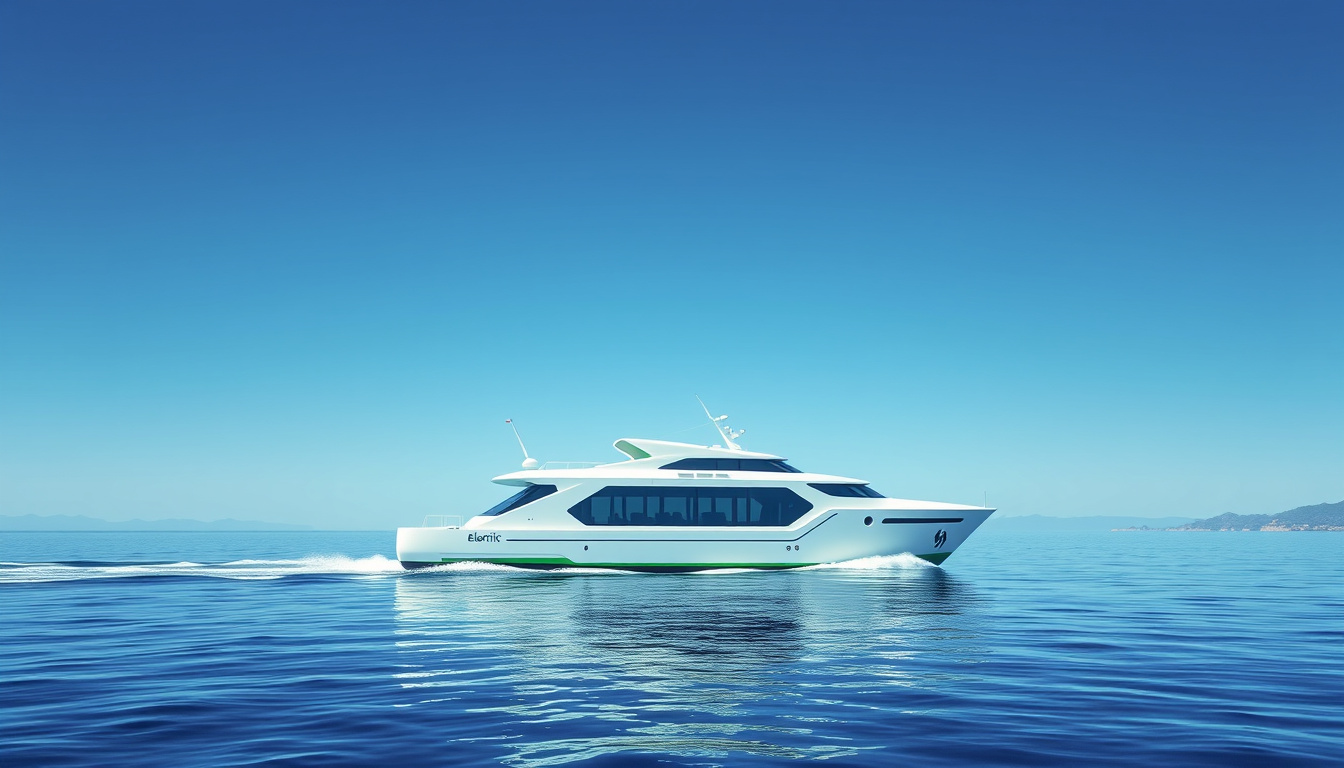The maritime industry is undergoing a significant transformation as electric ferries and marine vessels emerge as viable alternatives to traditional diesel-powered ships. Driven by a growing emphasis on sustainability, cost efficiency, and advancements in technology, the development of electric ferries represents a crucial step toward cleaner marine transportation. This article explores the benefits, challenges, and future of electric ferries while examining the industry’s shift towards electrification.

Benefits of Electric Ferries
Environmental Impact
Electric ferries have the potential to dramatically reduce greenhouse gas emissions and other pollutants associated with conventional vessels. By eliminating diesel engines, these electric boats are designed to operate with significantly reduced levels of carbon dioxide, nitrogen oxides, and particulate matter. For instance, the electric ferry operating in Puget Sound emits only 25% of the exhaust of its diesel counterpart, underscoring the environmental benefits that come with this technology. As the industry looks to satisfy stricter emission regulations and international targets for reducing greenhouse gases, electric ferries are well-positioned to lead the way.
Cost Efficiency
While the initial investment required for electric ferries may be higher, their long-term operational and maintenance costs are considerably lower. Electric vessels benefit from simpler mechanical systems that incur less wear and tear, resulting in lower maintenance expenses. Studies show that electric ferries can operate 21% more cheaply in energy costs compared to traditional diesel ferries. Furthermore, with battery advancements and improved energy efficiency, electric ferries are rapidly becoming more cost-effective in the long run.
Quiet Operation
One significant advantage of electric propulsion is the reduction in noise pollution. Traditional ferries can produce substantial noise due to internal combustion engines, whereas electric ferries operate smoothly and quietly, enhancing the travel experience for passengers and minimizing disruption to marine wildlife. This feature is especially beneficial in urban areas where noise pollution can impact local communities.
Challenges in Development
Infrastructure Needs
A major hurdle in the electrification of ferry fleets is the lack of robust charging infrastructure at ports. Adequate facilities must be established to recharge electric vessels efficiently, requiring collaboration among industry stakeholders to design and implement sustainable shore-side solutions. The variability in electrical capacity across different harbors poses additional challenges, particularly in remote locations where the transition to electric systems is necessary yet complex.
Battery Technology and Range
Current battery technology limits the operational range of electric ferries compared to their diesel counterparts. While advancements are being made, many electric ferries currently offer shorter ranges mainly suited for defined routes and schedules. For example, typical electric ferries today can cover between 5 to 30 nautical miles, depending on their battery capacities. Innovative designs such as the Candela P-12 hydrofoil demonstrate potential, achieving ranges of up to 50 nautical miles at high service speeds. Continuous research into battery efficiency and power management will be crucial for expanding the capabilities of electric marine vessels.
High Initial Costs
The upfront costs associated with electric ferries and necessary infrastructure upgrades can deter operators from making the transition. Although government incentives and subsidies can assist in mitigating these expenses, the industry must also address financial models that facilitate widespread adoption.
Industry Progress and Future Outlook
The maritime industry is witnessing strong growth in the electrification of ferries, with companies like BMT leading the charge by investing in research and design for electric vessels. Their recent developments, including a 32-meter all-electric ferry concept, highlight the industry’s commitment to sustainable transportation solutions.
Reports indicate that Europe, particularly countries like Norway, is at the forefront of electric ferry deployment, reflecting a broader global trend towards the electrification of marine transport. As more than 900 ships globally now operate with battery power, the momentum is evident. The International Maritime Organization’s commitment to achieving net-zero greenhouse gas emissions by 2050 serves as a major driver for these transitions.
Looking Ahead
As advancements in battery technology, recharging infrastructure, and electric propulsion systems continue to evolve, the future of electric ferries looks bright. A collaborative approach across various stakeholders, including shipbuilders, operators, and regulators, will be essential in addressing current challenges and optimizing systems for better performance.
In conclusion, electric ferries and marine vessels are not only reshaping the maritime industry but also contributing significantly to the global effort toward sustainable transportation. While challenges remain, the ongoing innovation and commitment to electrification represent a crucial step toward a cleaner, quieter, and more efficient marine transport system. As the world navigates these changes, electric vessels will likely play a central role in transforming waterborne transportation for generations to come.
——————————————————
Voltsandvolts.com is a blog dedicated to electric vehicles (EVs). Our blog features articles on EV reviews, stories, tips, tricks, charging infrastructure, and battery technology. Join the conversation and become part of the Voltsandvolts.com community today!
